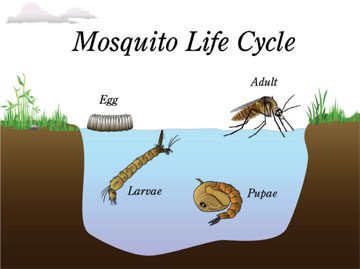Incidences of heartworm in both dogs and cats are on the rise nationwide. Here are a few reasons why.
- “White nose syndrome” in bats is a fungal infection which has killed over 6 million bats in North America since 2006. It can kill 100% of bats in a colony and has been described as “the gravest threat to bats…ever seen.” Bats consume millions of pounds of insects each year, including mosquitoes, which transmit heartworm. It has recently been confirmed in a bat colony near Seattle but its affect on western bat species is not known.
- A new invasive mosquito species–the Asian tiger mosquito, originally found in southeast Asia–has been spreading across the United States since the 1980s. It is larger (about 1/4″ long) than the much more common Culix mosquito. It has a white stripe down its back and white marks on its side, which is what give it its name. The Asian tiger mosquito feeds during the day (as opposed to dawn and dusk like the Culix) and will bite multiple times taking small blood meals. It will feed readily on dogs and cats, as well as humans. It breeds in small quantities of water (rather than streams and marshes) and so can be found in high populations in urban and suburban environments. Because of the way that it feeds (taking smaller meals from many hosts throughout the day), it may be accelerating the spread of heartworm.
- The repercussions of the natural disaster that was hurricane Katrina are likely still being felt. Many heartworm positive dogs and cats were relocated throughout the country; these animals, through no fault of their own, were reservoirs for the disease and now heartworm is endemic in coyotes, foxes and wolves all over the US.
Remember: mosquitoes spread heartworm. Prevention is the best medicine–keep your pets on heartworm medication year-round.

Recent Posts
About Us
Ann Arbor Animal Hospital is a locally-owned animal hospital operating for over 90 years in Ann Arbor, MI.
